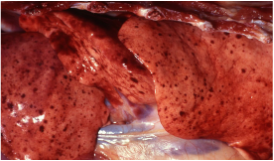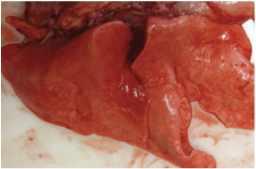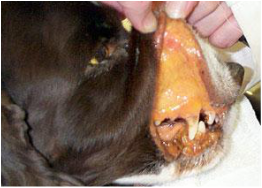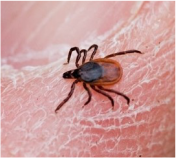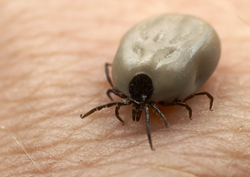Canine Vaccines
Vaccination Recommendations In Our Industry Have Changed Over the Years. It is important that all owners understand that not all vaccines require yearly boosters, but more importantly understand that routine physical exams and vaccines catered to your pet's lifestyle are vital to a long, healthy life. Yes, there are pets that can live 14-19 years with a few vaccines and no routine care. But, that lifespan is much less likely and their QUALITY of life or how they feel on a daily basis would typically not compare to those pets that receive appropriate vaccinations and routine care.
To catch disease early and to intervene before small issues become big ones, we recommend that a full exam be done at least yearly in pets under 5 and twice a year in pets 5 and older. Comprehensive care leads to a higher quality, longer life for your pet. Proactive owners often spend less on overall care because early intervention can delay onset of, decrease severity of, or completely prevent future problems.
The link below is a great explanation on many of the myths and facts associated with vaccines in both cats and dogs.
It's a great read before you go to your next vaccine appointment!
To catch disease early and to intervene before small issues become big ones, we recommend that a full exam be done at least yearly in pets under 5 and twice a year in pets 5 and older. Comprehensive care leads to a higher quality, longer life for your pet. Proactive owners often spend less on overall care because early intervention can delay onset of, decrease severity of, or completely prevent future problems.
The link below is a great explanation on many of the myths and facts associated with vaccines in both cats and dogs.
It's a great read before you go to your next vaccine appointment!
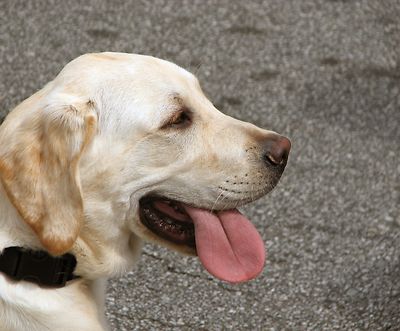
Canine Vaccine Recommendations:
Vaccines are determined by risk factors for the individual pet. Sometimes these factors are even different between individual dogs in a household. It is important that we understand your pet's specific lifestyle to make decisions about frequency of core vaccines and whether your pet should have non-core vaccines as well.
Vaccines are determined by risk factors for the individual pet. Sometimes these factors are even different between individual dogs in a household. It is important that we understand your pet's specific lifestyle to make decisions about frequency of core vaccines and whether your pet should have non-core vaccines as well.
|
Core Vaccines:
*Rabies required by law for cats, dogs, and ferrets |
Non-Core Vaccines:
|
Core Vaccinations:
Canine Distemper Virus: Highly contagious progressive viral disease which causes a range of upper respiratory symptoms to pneumonia, gastrointestinal symptoms and neurologic disease. Distemper is passed by aerosolized respiratory secretions. Infected dogs can pass the virus for months after they become infected. Diagnosis can be difficult, the coarse of the disease long and arduous and distemper infection is typically fatal. Protection from CDV is an important component of the canine core vaccines.
Canine Distemper Virus: Highly contagious progressive viral disease which causes a range of upper respiratory symptoms to pneumonia, gastrointestinal symptoms and neurologic disease. Distemper is passed by aerosolized respiratory secretions. Infected dogs can pass the virus for months after they become infected. Diagnosis can be difficult, the coarse of the disease long and arduous and distemper infection is typically fatal. Protection from CDV is an important component of the canine core vaccines.

Canine Parvovirus: Canine parvovirus is an extremely contagious viral disease to unvaccinated dogs. Part of the difficulty with this disease is it's hardiness or ability to survive in the environment for easily a year or more even in very cold, very warm, or very dry conditions. It is also resistant to many commonly used cleaners. The viral concentration in feces of infected dogs is very high and can be shed prior to a dog's clinical symptoms as well as after the disease has been treated. Dogs come into contact with infected feces in the grass, dirt, concrete, or things such as shoes or other fomites that may have come into contact with fecal matter. Symptoms of disease include vomiting and diarrhea and progress from mild to severe in a matter of days as the virus kills cells in the body that replicate quickly including cells of the intestinal wall, lymph system and bone marrow. Pets can develop a very low white blood cell count as they concurrently become dehydrated, lose critical electrolytes, develop hemorrhagic diarrhea and become susceptible to bacteria within their own gastrointestinal tract. Treatment for this disease typically needs to be aggressive and in-hospital to help increase probability of survival.
|
Canine Adenovirus-1 or Canine Hepatitis:
Canine Hepatitis (caused by CAV-1) is closely related to the CAV-2 virus listed below and above. Symptoms of the two viruses however, are very different. CAV-1 is a very hardy virus, surviving for weeks or months in the environment. It is transmitted to dogs by ingestion of urine, fecal matter or saliva from an infected animal. Because of CAV-1's ability to survive outside the host, like parvovirus, direct or close contact with an infected animal is NOT necessary for transmission to your pet. Once infected, dogs can have symptoms ranging anywhere from mild fever with a cough and upper respiratory discharge to more severe or lethal symptoms when severe liver inflammation occurs and normal liver function is lost. Pets can become jaundice, anorexic, weak, or loose their ability to clot blood normally. Oral bleeding or large hematomas on the trunk or limb, bleeding around the brain or spinal chord (causing seizures, ataxia or paralysis), bloody diarrhea, lung bleeds or acute death then occur. Symptoms in some animals can resemble those of parvovirus listed above. Many dogs can recover, but often need fluid, antibiotic and blood transfusion therapy. The viral infection can have lifetime residual effects or can be fatal. Because the virus can be carried in foxes, coyotes, and other wild or feral hosts and because of it's hardy environmental survival, continued vaccination against this virus is recommended. Also, because of the close relation between CAV-1 and CAV-2, your dog can be given a "modified, less aggressive CAV-2 virus" vaccine and be protected from both CAV-1 and 2 viruses (see CAV-2 below). |
|
Puppies:
Distemper + Parvo + CAV-2: Series can start as young as 6 weeks of age. Vaccines are given every 3 to 4 weeks until 15 to 16 weeks of age Rabies: One year vaccine ideally at 12 to 16 weeks of age ***We also highly recommend Leptospirosis and Lyme vaccines for your puppies safety*** |
Adult Core Vaccines:
Distemper + Parvo + CAV-2: Booster given one year from completion of puppy series and then every 3 years thereafter Rabies: Three year vaccine given one year after first rabies vaccine and every 3 years thereafter *** We also highly recommend yearly Leptospirosis and Lyme vaccines for your pets safety*** |
Risk Factors Determining Non-Core Vaccine Recommendations:
Canine Parainfluenza: Canine parainfluenza virus is a highly contagious respiratory virus and is one of the most common components of infectious tracheobronchitis, also known as canine cough or kennel cough. It can be spread through the air from infected animals for a couple weeks after they become infected. Symptoms of the disease can be a dry hacking or moist cough, low-grade fever, depression or decreased appetite with or without a nasal discharge. These symptoms typically come on very abruptly. It was once recommended that dogs that go to dog parks, doggie daycare, groomers, participate in agility or shows, or will be boarding should be vaccinated against this disease. Because this disease is more self-limiting and is secondary to other infectious components of canine cough, vaccination for this disease is typically not necessary except in very specific situations. When given, it is combined with Core vaccines, or with Bordetella and/or CAV-2.
Leptospirosis: Leptospirosis is a type of spirochete (similar to bacteria) that can infect you and your pet. The most common forms (strains) to cause infection in dogs are Leptospira icterohaemorrhagiae, L. canicola, L. grippotyphosa, L. pomona. Cats appear resistant. These spirochytes live in the kidney of an infected animal, typically wildlife or pets not expressing signs of illness, and then they are shed into the urine. With rain, the organism is easily picked up by sniffing urine or ingestion of water in puddles, streams, etc in and around areas wildlife frequent. Most common carriers are wildlife such as racoons, skunks, rats and mice but it can also be carried by livestock. This disease can cause a variety of symptoms depending on the strain causing infection. Symptoms such as lameness, fevers, kidney and liver failure are all possible. Vaccines were typically reserved for farm dogs, hunting dogs or dogs who live outside. But the population of pets needing to be vaccinated in this area of Ohio has increased due to increased risk and amount of wildlife in our area. Initial dosing should be dogs at or older than 12 weeks and first vaccine must be followed by a booster 2 to 4 weeks later. Leptospirosis requires a yearly booster for dogs at risk and most dogs are given this vaccine annually at our clinic.
See a recent article relating to the Massillon area:
Canine Parainfluenza: Canine parainfluenza virus is a highly contagious respiratory virus and is one of the most common components of infectious tracheobronchitis, also known as canine cough or kennel cough. It can be spread through the air from infected animals for a couple weeks after they become infected. Symptoms of the disease can be a dry hacking or moist cough, low-grade fever, depression or decreased appetite with or without a nasal discharge. These symptoms typically come on very abruptly. It was once recommended that dogs that go to dog parks, doggie daycare, groomers, participate in agility or shows, or will be boarding should be vaccinated against this disease. Because this disease is more self-limiting and is secondary to other infectious components of canine cough, vaccination for this disease is typically not necessary except in very specific situations. When given, it is combined with Core vaccines, or with Bordetella and/or CAV-2.
Leptospirosis: Leptospirosis is a type of spirochete (similar to bacteria) that can infect you and your pet. The most common forms (strains) to cause infection in dogs are Leptospira icterohaemorrhagiae, L. canicola, L. grippotyphosa, L. pomona. Cats appear resistant. These spirochytes live in the kidney of an infected animal, typically wildlife or pets not expressing signs of illness, and then they are shed into the urine. With rain, the organism is easily picked up by sniffing urine or ingestion of water in puddles, streams, etc in and around areas wildlife frequent. Most common carriers are wildlife such as racoons, skunks, rats and mice but it can also be carried by livestock. This disease can cause a variety of symptoms depending on the strain causing infection. Symptoms such as lameness, fevers, kidney and liver failure are all possible. Vaccines were typically reserved for farm dogs, hunting dogs or dogs who live outside. But the population of pets needing to be vaccinated in this area of Ohio has increased due to increased risk and amount of wildlife in our area. Initial dosing should be dogs at or older than 12 weeks and first vaccine must be followed by a booster 2 to 4 weeks later. Leptospirosis requires a yearly booster for dogs at risk and most dogs are given this vaccine annually at our clinic.
See a recent article relating to the Massillon area:
|
The Leptospirosis vaccine historically has been considered to be a very reactive component in canine vaccinations. The brand of vaccine we use from Boehringer Ingelheim is a very "pure" vaccine that has been shown in recent studies not to be NEARLY as problematic and has a very low incidence of reaction! We give your pet the BEST!
|
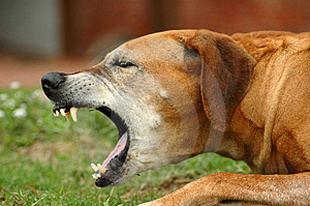 courtesy of vetcare.net
courtesy of vetcare.net
Canine Adenovirus-2: Canine Adenovirus-2 is a highly contagious adenovirus that causes upper respiratory symptoms such as dry, hacking cough, retching with or without foam, and often conjunctivitis (or inflammation of the tissues around the eye). This virus is also part of canine cough or kennel cough. Dogs that go to dog parks, doggie daycare, groomers, participate in agility or shows, or will be boarding should be vaccinated against this disease in the intranasal form combined with Bordetella and Canine Parainfluenza. Vaccination for this disease is part of the Core vaccine injection because CAV-2 provides protection against CAV-1 or Canine Hepatitis listed above.

Bordetella Bronchiseptica: Bordetella is a highly contagious bacteria that is part of the canine cough complex. It causes inflammation of the trachea (windpipe) and smaller airways. It causes identical symptoms to CAV-2 above. It is contagious by nose to nose contact, the air, or on fomites and can spread from dogs to cats. The disease in cats is know as feline bordetellosis. Risk factors are those above for CAV-2 and Canine Parainfluenza. Bordetella vaccination is available as an intranasal or oral vaccination alone or combined with CAV-2 and Canine Parainfluenza. It is also available as an injectable vaccine, but we use this vaccine on a limited basis because Bordetella injection requires a booster two to four weeks later and the Bordetella injection commonly causes pain or irritation.

